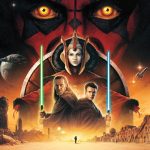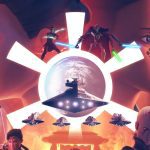Why You Should Watch Avatar: The Last Airbender 15 Years Later
Friday was the 15th anniversary of Avatar: The Last Airbender, my favorite TV series, and one of the best American animated TV series ever. Spawning a 2010 live-action film, video games, toys, and even a sequel series, it always surprises me how many people haven’t seen Avatar yet. I avoided it during its initial run because I had other interests, and from what little I knew, the concept didn’t appeal to me. I don’t want to go into too much detail, but I finally watched the series in 2013 at a pivotal moment in my life. I talk a lot about films and series that I love because it’s cathartic to discuss things that move us and why that might be. Avatar: The Last Airbender was the first time I realized how cinematic a TV show could be, but more importantly, its messages and characters hit me in a way that anything rarely has. I’d like to take a look at the show’s best elements (pun intended) and challenges that I think Netflix will face in adapting it to live-action.
Action
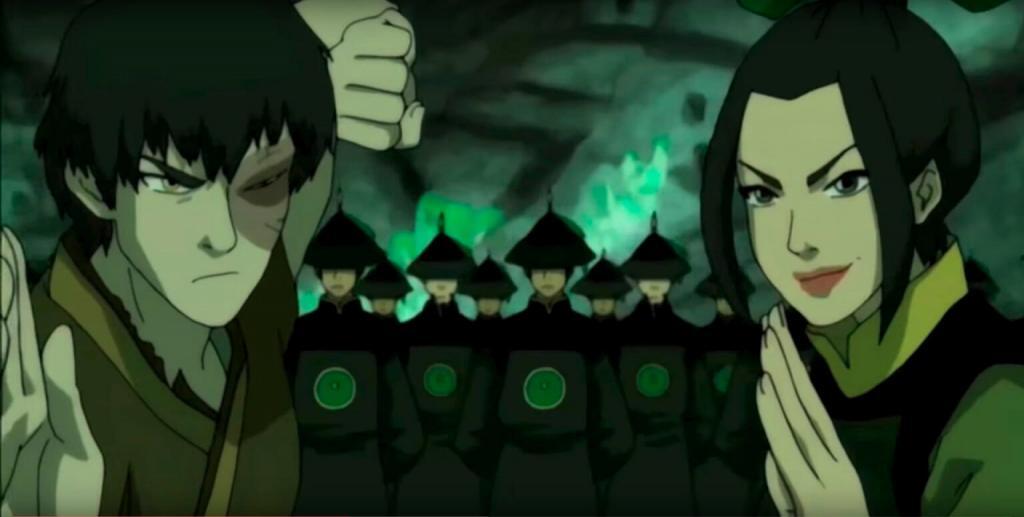
The way Avatar utilizes martial arts forms and various types of weapons is brilliant. Each nation has its own type of bending or elemental magic, and a martial arts tradition to go along with it. The differences in movements are directly linked to each nation’s culture, beliefs, and connection to the natural and spirit worlds. Avatar contains some of the most heart-pounding and visually splendid action sequences I’ve ever seen. Sifu Kisu consulted on the series and helped to give each nation, as well as splinter groups and, in some cases, individual characters, unique fighting styles. The characters and their relationships are always propelling the action forward, whether it’s an enormous battle or a one-on-one duel. This is important because whenever two people or groups are fighting, it’s not just adrenaline or visual interest that keeps the fights exciting. Each struggle feels intensely personal and unique because of the characters involved and how you feel about them. As for Netflix’s upcoming live-action remake, this is definitely an area in which I have my concerns. I won’t say it would be impossible to display such fluid motion, fast action, and passionate fight sequences in live-action. There are plenty of great live-action examples within the action genre. However, I do think it would be difficult to nail this particular show’s look with live actors. This is especially true when you factor in the elements and the overall look of bending.
Themes
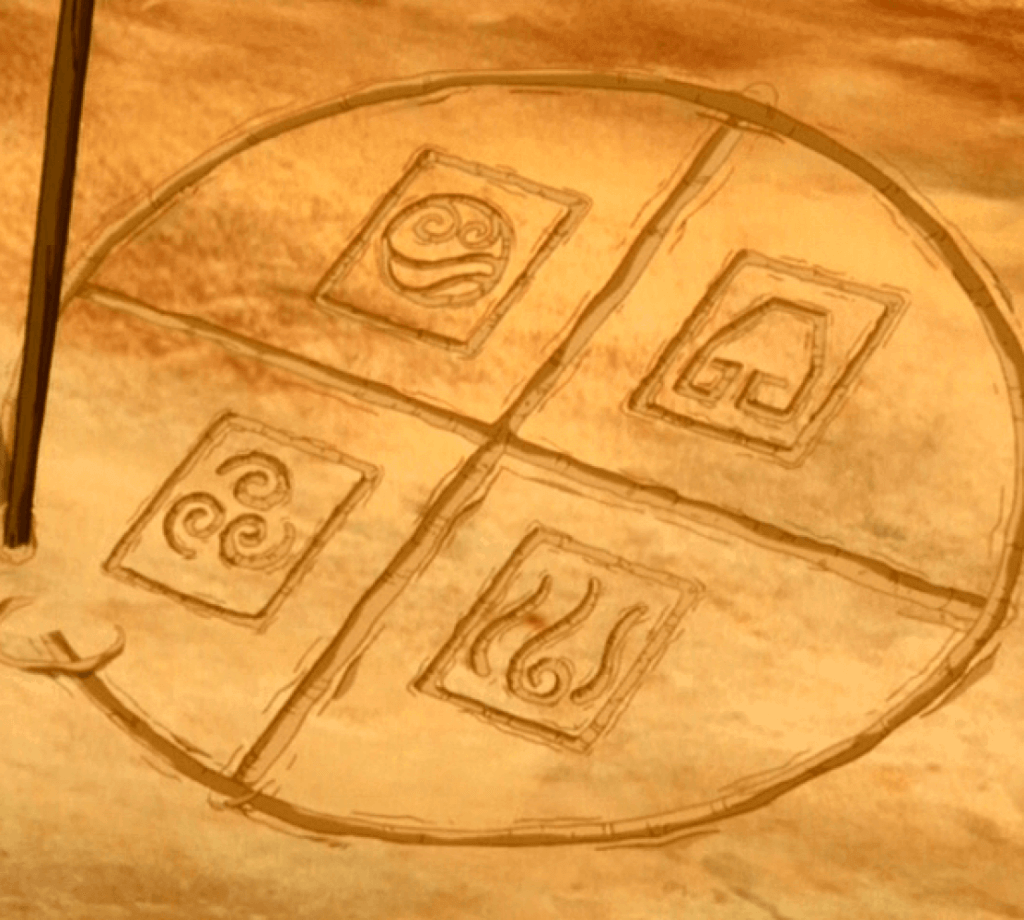
Avatar’s 3 seasons, called Books, consist of a combined total of 61 episodes. Such being the case, you’d be hard-pressed to list out all of the themes explored in the series. Some of the overarching ideas expressed throughout the show include destiny, personal choice, selflessness vs. one’s individual needs and identity, and more. The show explores the impact a world war has, not only on soldiers but on children at home, animals, social and military leaders, and more. If you’ve ever looked back on real-life conflicts and wondered why one or both sides would do such things, Avatar delves into that in a way that young children can understand without talking down to the audience. And the show doesn’t stop there. At first, the Fire Nation seems like this purely evil entity full of heartless people who want to subjugate the world’s other peoples and establish dominance. Of course, this is true of the Firelord (Mark Hamill) and others in power, but the series, especially in Book 3: Fire, really adds dimension to the regular people in the Fire Nation.
On top of that, we see starting in Book 2: Earth that the other nations aren’t blameless in the war and that, in some cases, they make things worse for their people. Even in Book 1: Water, episode 10, “Jet,” we see some freedom fighters who oppose the Fire Nation doing inexcusable things to innocent citizens. As much as I love Harry Potter, it always bothered me that Gryffindor is always filled with good people (only one exception comes to mind), while Slytherin is the opposite. The majority of Death Eaters and criminals are Slytherin, while almost all heroes and good people are from the other three houses. In fact, while the TV series are much more complex in this area, the Star Wars films are also guilty of painting war in black-and-white. There have been obvious opportunities to remedy that with characters like Finn and Hux in the new movies, as well as the Separatists in the prequels (the latter of which is covered in The Clone Wars). Regardless, I love both of those properties when the content they put out is as good as we know it can be. My point is that Avatar shows the gray area and complex loyalties involved in a global scale war better than most media with large fandoms that I can think of. In Book 3’s second episode, “The Headband,” Aang (Zach Tyler Eisen) and his friends infiltrate a Fire Nation town, and he attends school there as part of his cover. He experiences first-hand how children in the Fire Nation are indoctrinated, stifled, and taught history, which he knows to be factually incorrect. When Aang questions his teacher and presents his view of the event in question, he’s punished for speaking out and challenging the lesson.
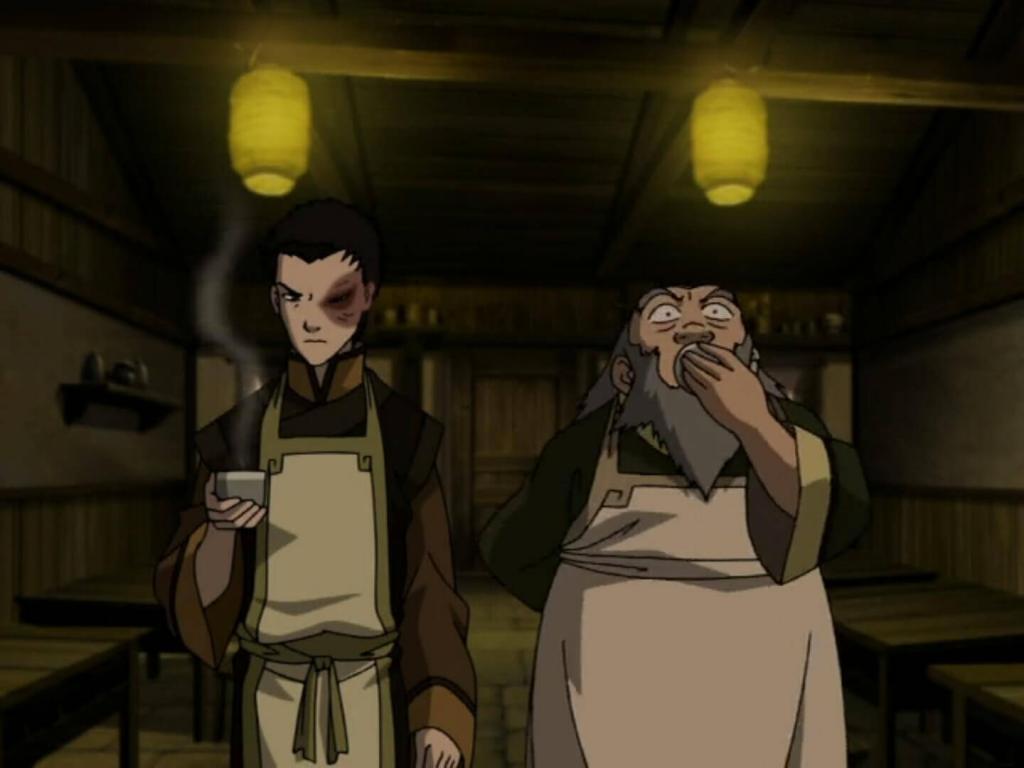
Another favorite of mine is Book 2, episode 16, “Appa’s Lost Days.” Earlier in episode 10, “The Library,” Sokka (Jack De Sena), Aang, and Katara (Mae Whitman) entered Wan Shi Tong’s library to find information on how to defeat the Fire Nation and win the war once and for all. Blind earthbender Toph (Jessie Flower) is left to watch Appa, Aang’s pet sky bison, who serves as the group’s mode of transport. Sandbenders kidnap the helpless animal, leaving the girl stranded in the desert, trying to save her friends. “Appa’s Lost Days” catches us up on his adventures and trials endured during the past few episodes we’ve spent with a dejected Aang and his friends. Of course, there’s no extreme violence in the episode, but it does show Appa being abused and mistreated by various people along his journey. He also struggles to find food, shelter, and to escape various enemies. As an animal lover, this was difficult to watch, especially after witnessing his intelligence and bond with the other characters in the show. However, the scene that really killed me was a flashback to when Aang chose Appa as his sky bison before the Hundred Year War. This is contrasted with Aang and Appa’s current respective situations, and it’s just devastating. Finally, the entire show, but especially the later two seasons, deal with this idea of connectedness. In Book 2, episode 9, “Bitter Work,” Prince Zuko’s (Dante Basco) Uncle Iroh (Mako) explains the philosophies behind each nation’s culture and how it relates to their spirituality and bending abilities. I won’t spoil it here because it’s a fantastic bit of dialogue, but this is one of many times where the series implies that the four nations have more in common than they realize. They are “one people, but [they] live as if divided,” as Guru Pathik says to Aang near the end of Book 2. This oneness extends to the natural and spirit worlds, as well as different groups of people. It is entirely possible to keep all of these plot details and lines of dialogue intact for the remake. However, it would be a challenge to nail so many interesting concepts as well as or better than the original animated series did.
Characters
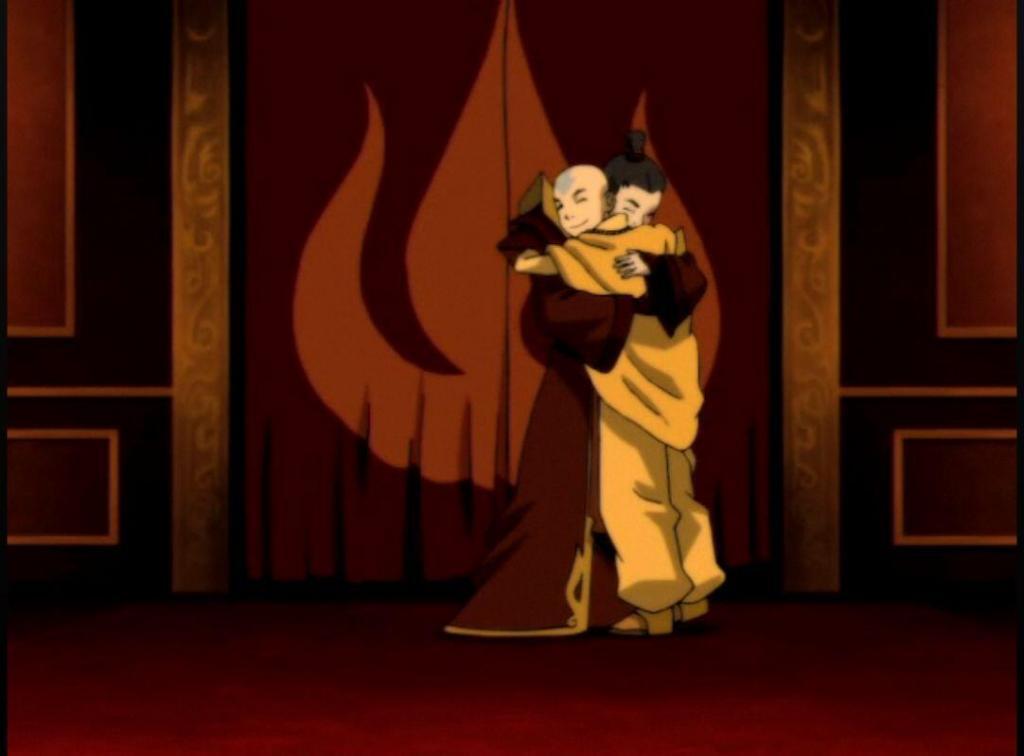
I could go on all day about what makes this show great, but it feels like I already have, so I’ll wrap it up with what ultimately makes Avatar for me: the characters. It’s hard to know where to begin because the characters in this show are so well-developed. Background characters who appear in a single episode of Avatar have more personality and backstory than secondary characters or even main cast members on other series I’ve seen. Aang’s pets Appa and Momo have more personality than some of the main characters on this show’s sequel, Legend of Korra. Aang is the titular character, and he goes on a hero’s journey similar to that of Luke Skywalker, Harry Potter, or others we could name. One thing that’s very interesting about Aang’s arc is that it calls into question the chosen one narrative and how being deemed as such would impact a young child. The Air Nomad council prematurely tells Aang, his caretaker Monk Gyatso, and his friends that he is the Avatar, a bridge between the natural and spiritual worlds and the only being on Earth that can bend all four elements. Normally, the Avatar is chosen from the appropriate nation (he/she is born in a cycle: Water/Earth/Fire/Air) at age 16. Aang is chosen when he is because of the coming war with the Fire Nation. One could argue that doing this leads to some of the war’s atrocities and makes things worse rather than better. It also puts enormous pressure on an 11-year-old to save the world and leave behind everyone he ever knew or loved.
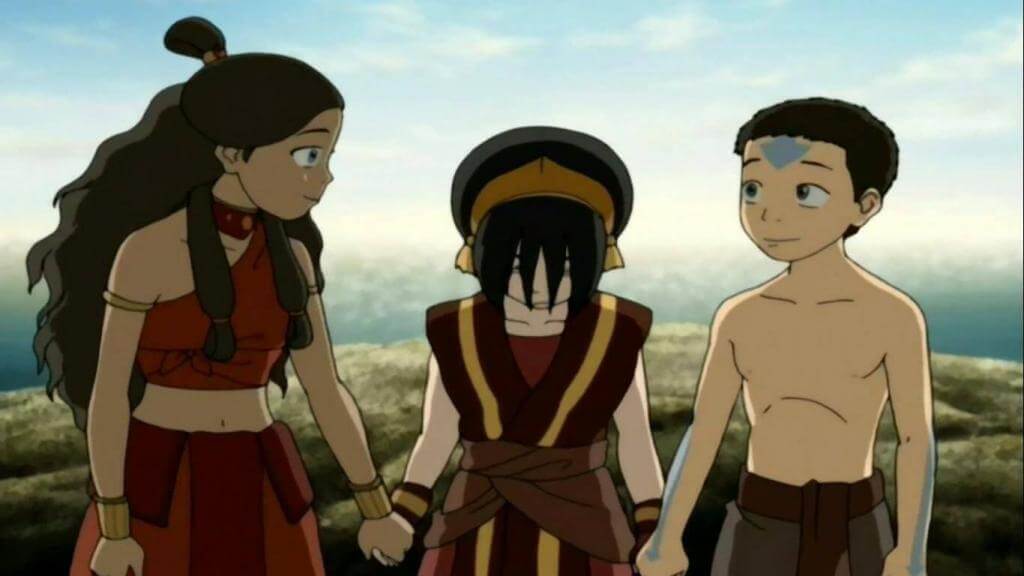
Aang’s journey also ties into some of the themes I mentioned, like personal choice, destiny, and selflessness. The Air Nomads were a peaceful people, and Aang was raised to hold all life as sacred. When it is his destiny to destroy the Firelord and restore balance to the world, what comes first? His destiny and responsibility to the people of the world, or his beliefs and respect for all life, even that of his enemy? My favorite character is Zuko, the disgraced, banished Prince of the Fire Nation. He begins the series on a wild goose chase to capture the Avatar, who everyone believes to be dead, to restore his honor and regain his father’s love and respect. I don’t want to spoil too much, but this is bar none the greatest character redemption arc I’ve ever seen. Filled with conflict and self-loathing and guided by his Uncle, the only loving family member he has, Zuko learns much about the four nations, the Avatar, his father the Firelord, and much more. He makes mistakes time and again, and after the events of the Book 2 finale, “Crossroads of Destiny” (which is un-freaking-believably good, by the way), it seems like he has made his ultimate choice and redemption isn’t possible. My favorite episode of the whole show is Book 3, episode 6, “The Avatar and the Firelord.” This episode, like many others, follows two subplots: Aang and his friends, and Zuko and Uncle Iroh. After the aforementioned Book 2 finale, Iroh is in prison for helping Katara and a severely injured Aang escape, thanks in part to Zuko’s betrayal. From there, he encourages Zuko to research his great grandfather’s death. Meanwhile, Aang is taken by Avatar Roku, his previous incarnation, to see significant events of his life. The two stories intertwine, as Firelord Sozin and Avatar Roku were the best of friends at one point, and bitter enemies after Sozin began what would become known as the Hundred Year War. This entire episode brilliantly shows parallels between Aang and Zuko, as well as between their respective predecessors. It’s also incredible how this 24-ish-minute episode gets the viewer emotionally involved in the friendship of two men who lived a millennium ago. The episode shows Roku’s ultimate demise, which transitions into Aang’s birth in a beautiful scene that has me in tears every time. The ending delivers a truly brilliant plot twist involving Zuko’s lineage and how he connects with Aang, and gives a second meaning to the episode’s title.

After 15 years, Avatar is one of the most well-regarded cartoons ever created for TV. I’ve never spoken to anyone who watched it and didn’t love it, although it’s only fair to warn that, like many series, the first few episodes aren’t nearly as good as those that come later. I’d say that by Book 1, episode 12, “The Storm,” you’ll know whether the show is for you. This episode is another that explores Zuko’s tragic backstory and his similarities with Aang. It’s just really, really good at showing how these characters became the way that they are. These characters are forever tied to their distinct voice actors and character designs within this show. I think finding suitable live-action replacements will be another hurdle for creators Bryan Konietzo and Michael Dante DiMartino to overcome. All this being said, even if the remake series is absolutely terrible like M. Night Shyamalan’s 2010 film was, it won’t really matter. While I do like Legend of Korra and am glad it exists, it’s nowhere near as good as Avatar, and that didn’t hurt the original series. Everyone still loves the original Star Wars trilogy, the Harry Potter books, and Lord of the Rings movies, despite them receiving horrible follow-ups. This remake series likely won’t be as good as the near-perfect animated series, but maybe it will bring people to watch the original, and that can only be a good thing. I’ve been impressed by a lot of TV series in the past few years, many of them animated. But Avatar is my personal favorite, and I think it only gets better with age.




